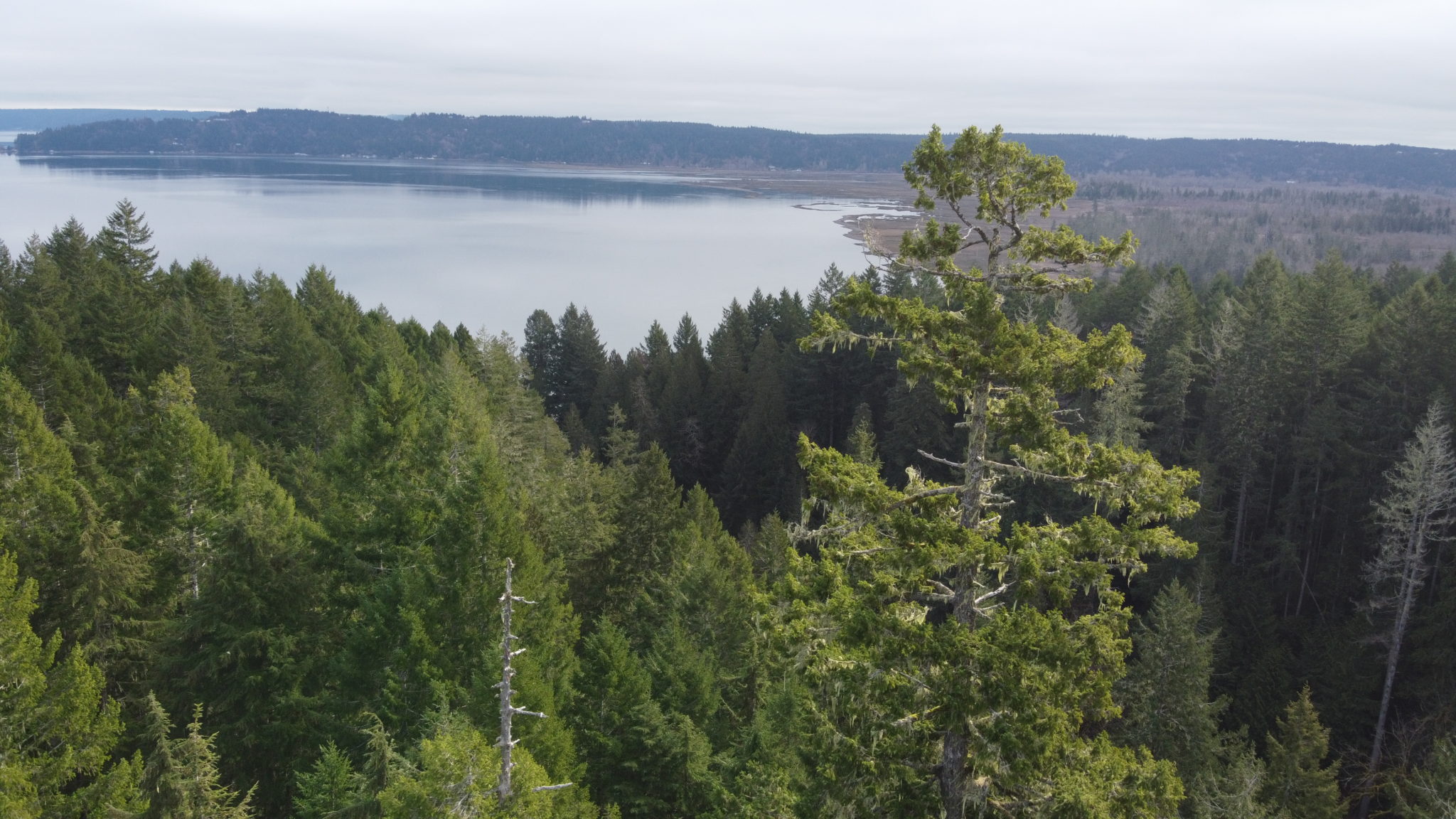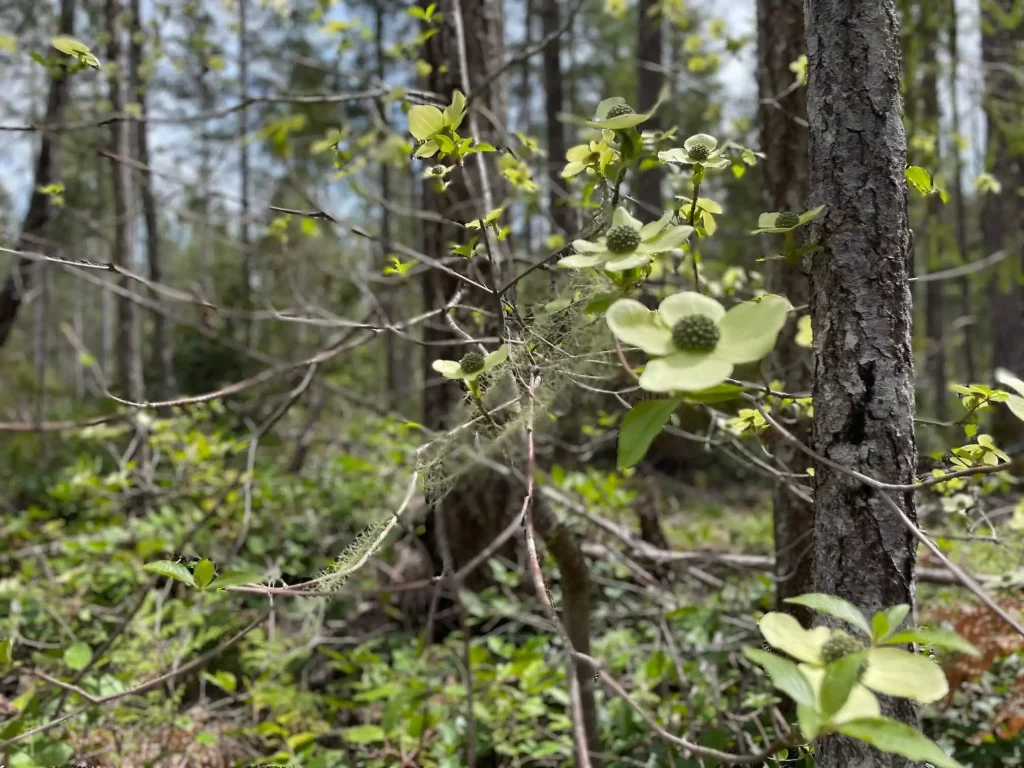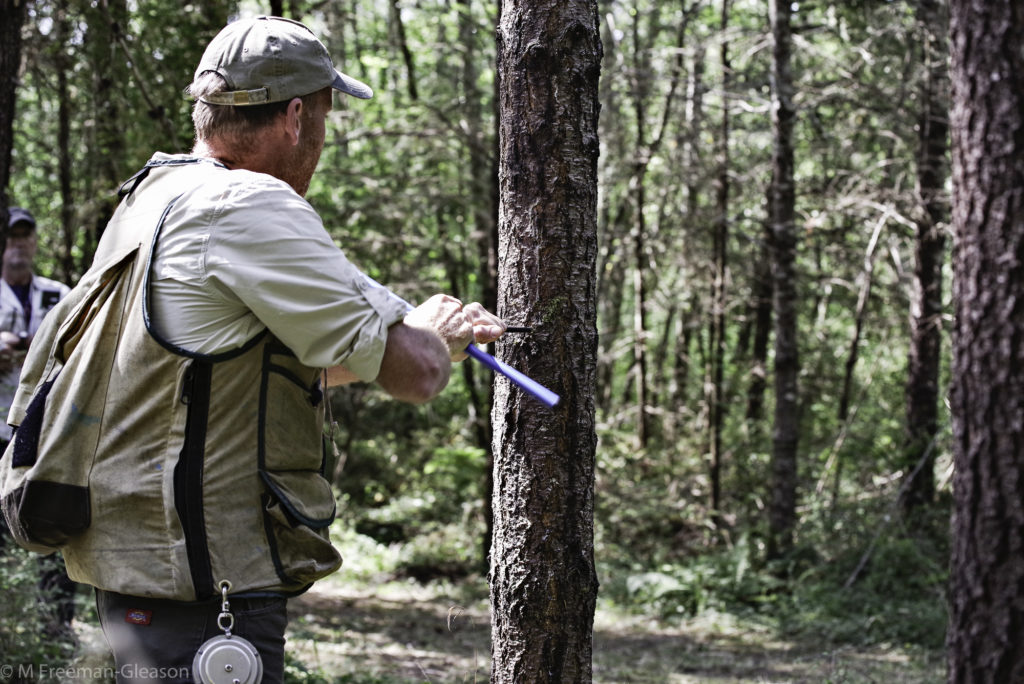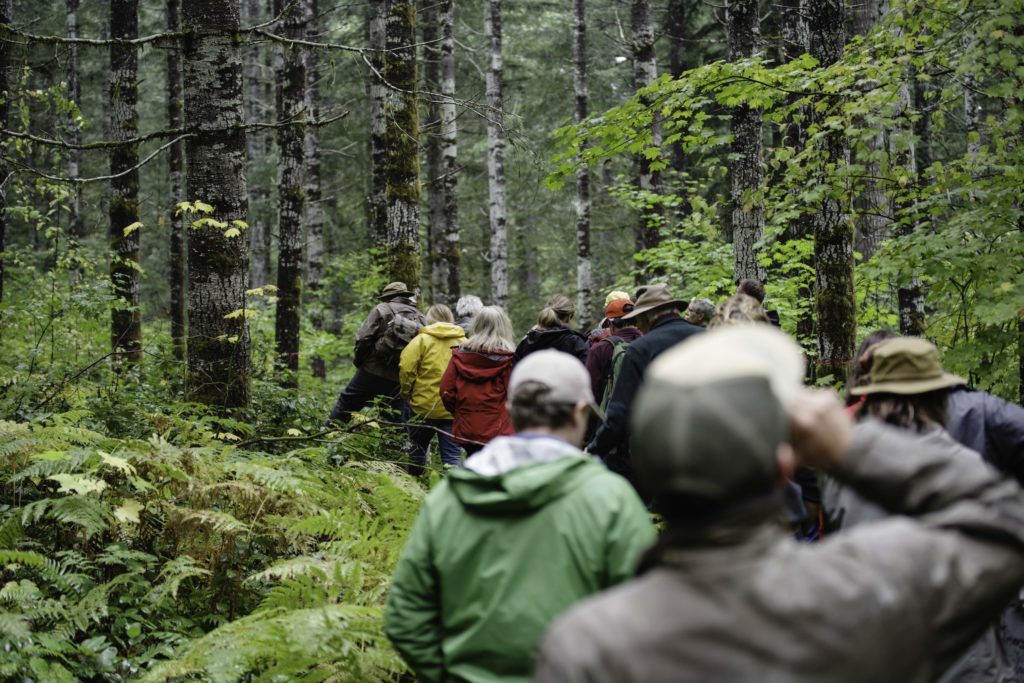Read an Excerpt of our Forthcoming Book | A Forest of Your Own: The Pacific Northwest Handbook of Ecological Forestry

A new and unique project is underway for NNRG: we’re writing a book! Co-authored by NNRG’s Executive Director Seth Zuckerman and Director of Forestry Kirk Hanson, and published by Mountaineers Books, the book will be a “how-to” manual for forest owners that teaches them to notice the natural qualities of their land, decide how to care for it, and roll up their sleeves to keep it healthy for the next generation. The anticipated publication date is spring 2024.
The introduction to the book—authored by Seth Zuckerman—is published below.
I cut my teeth in forestry during the late 1980s and ’90s, a time known on the West Coast for the Timber Wars. Hardly more than a century after lumberjacks first arrived in the region, it had become inescapably clear that timber harvest was decimating the few remaining ancient forests. Environmental activists raised the alarm: apart from small preserves in state and national parks, the grandeur of western forests was at risk, along with the habitat they provided for creatures ranging from spotted owls to steelhead trout and slender salamanders. On the other side of this concern for oldgrowth forests, loggers and millworkers saw a threat to their livelihoods, and the forest industry sensed a threat to its bottom line. Battle lines were drawn.
You could see the conflict in any town on the coast, from Fort Bragg, California, to Bellingham, Washington, expressed in a counterpoint of bumper stickers: a clenched fist shouting, “Earth First!” on a Subaru station wagon, and “Earth First—we’ll log the other planets later” on a Ford F-150. The wittiest ones always seemed to come from the logging side: “Spotted owl tastes like chicken,” and my personal favorite, “Hug a logger—you’ll never go back to trees.”
But among the wide selection of slogans, I never found one that resonated with me enough to put it on my own car. Trees are a renewable resource, and can provide the raw materials for roofs over our heads and chairs under our butts—with much less environmental impact than steel, concrete, or plastic. And yet, the old-growth forests were irreplaceable on any human time scale. I could walk among these towering trees and feel both small and at peace, moved in a way that transcended what I felt when I hiked through a meadow or younger forest. To cut the last of these magnificent forests was to waste a legacy that our generation had been put temporarily in charge of. So, how to distinguish good, thoughtful logging from rapacious liquidation of our natural heritage? I wanted to make clear that I understood the need to harvest some timber, but I also appreciated the other jobs a tree can do besides becoming a two-by-four.
The answer I came up with, which I wrote out in block letters on a sheet of waterproof paper and taped onto the back of my VW bug, was “cut trees, not forests.” In a sense, the work I’ve done in forestry ever since has been an exploration of how to translate that idea into action.
Over time, that quest led me to embrace an approach—developed by luminary scientists such as Jerry Franklin of the University of Washington and Norm Johnson of Oregon State University—called ecological forestry. From this perspective, the forest isn’t just a wood factory or the equivalent of a cornfield with taller plants; it’s a whole system entrusted to its current human stewards, who are tasked with looking after it until the time comes to hand it off to the next caretakers. In the meantime, we may harvest what the forest can spare while still maintaining its integrity—all of its parts and the intricate connections between them. When our turn is done, the forest passes on to the next team of stewards—either by sale or inheritance for private forests or by turnover of staff or leadership in the case of corporate and public forests. Either way, the forest will likely outlive anyone who is looking after it at the moment.

In 2017, I found a perch from which to advocate this approach at Northwest Natural Resource Group (NNRG), a Seattlebased nonprofit that has been promoting better stewardship of Oregon and Washington forests since 1992. Before joining NNRG, I spent most of the previous two decades writing about forests, salmon, energy, and other aspects of the Northwest’s resource economy, getting a chance to see what innovations were being tried from Northern California all the way to the Alaskan panhandle. Then came the chance to be part of a team that was spreading the good word and demonstrating its impact on the ground. That’s where I met Kirk Hanson, NNRG’s director of forestry, who has led the organization’s on-the-ground work with landowners for many years. From workshops to management plans, site visits with landowners, and demonstrations of how to use a chainsaw, Kirk has been teaching people how to care for their forests for more than twenty years—first with the Washington Department of Natural Resources, and since 2006 with NNRG. It was with Kirk that I hatched the idea for the book you hold in your hands, and we have created it together, as a way to collect and pass along what we have learned about the stewardship of forests.
If you live in the Northwest, forests are likely in your blood, or at least in the view out your window. They are the signature feature of our landscape, like volcanoes in Iceland, grasslands in Kansas, and cacti in the Southwest. This book will help you understand forests and learn how to take care of them. If you own a forest—or even a patch of trees in your backyard—this book will give you information that you can immediately put to use. If you are thinking about buying a piece of forested land, this book will help you identify what to look for so that the forest you own will meet your combination of goals, means, and desires. Even if you don’t fall into either of those categories, all of us Northwesterners have a stake in the forests that are managed on our behalf by the state and federal governments. Quite a few of us are constituents of county and municipal forests as well. We don’t expect every reader of this book to have their own forest— in fact, only one of us (Kirk) owns more than an acre of woods. We use the phrase your forest in this book to mean whatever forest you have in mind or is near to your heart.
Like the care of any patch of ground that we want to coax to a particular use—tomato bed, pea patch, rose garden—forestry requires an understanding of how the myriad factors of soil, sun, water, and beneficial species come together to produce the plant community we desire. But compared to those crops and gardens, forests are unique in their longevity. If you sow tomatoes, however well or badly your plants produce, you’ll likely get a chance to try again next year. But forests call upon us to think across longer time scales, to consider the next custodians of these woods, and to enrich the variety of options those custodians can choose from when it is their turn as stewards. Broadening that spectrum of future choices is especially important as climate change accelerates and shifts the very conditions that made forests possible.
What’s more, forests are diverse, interconnected communities of fungi, soil microbes, invertebrates, birds, mammals, amphibians, and yes, trees. Many of those connections have just come to light in the last few decades, as scientists have developed tools to track the flow of nutrients and water through the intricate web of life that lies beneath the soil and have learned to ascend into the forest canopy with climbing gear. A basic premise of ecological forestry is that all of those parts contribute in some way to the health of the forest as a whole. As conservationist Aldo Leopold wrote, “To keep every cog and wheel is the first precaution of intelligent tinkering.”
In this book, we will show you the many cogs and wheels that whir together in a Northwest forest and drive it forward into the future. As intricate and awe-inspiring as the processes at work in the forest are, they aren’t that complicated—just ignored as we go about our busy human lives, which unfold at a pace that must look frenetic from the standpoint of a six-hundred-year-old cedar tree. The processes all take place in a context that is at once economic, historical, and ecological—economic because the value of Northwest trees in commerce has determined much of the trajectory of these forests since the mid-nineteenth century; historical because the forests we see today are the product of the epochs-long path they have traveled; and ecological because it is the combination of climate, soil, flora, and fauna that shapes the potential of each forest. That’s the essence of Part I.

With an understanding of this context, you will be able to see deeper into your forest. In Part II, we’ll discuss how to find forestland for sale and how to get to know your forest better by looking more closely at the canopy, the understory, and the roads and streams running through the woods. You’ll look for threats such as signs of insect infestation, tree diseases, and invasive species. Once you are armed with those observations, we’ll equip you to make a more detailed inventory of your forest that will provide information and ideas you can fold into a management plan. Since forests are such long-lived systems, it pays to take the time to become familiar with your forest and make a plan for how you will manage it over the years to come.
In Part III, we’ll explain how to put those intentions into practice for your forest or backyard woodland. We’ll describe how you can establish a new stand of trees and protect it from deer that would eat it or from the salmonberry or salal that would engulf it. Once the seedlings turn into saplings, controlling their density becomes the next important task, and we’ll show you different ways to keep them not too crowded but not too sparse either. You’ll learn about ways to improve the timber value of your forest, protect it from catastrophic fire, and make it more useful to wildlife. Where the previous chapters answered the why and the what, these chapters lay out the how. We’ll help you distinguish, too, between projects you can take on yourself and those that will require you to enlist the help of skilled and better equipped professionals.
This section also delves into the many rewards of forest ownership and how to reap them—from the more obscure, such as floral greens, mushrooms, and medicinal plants, to the more obvious, such as timber harvest and trail construction.
Finally, in Part IV, we’ll conclude by looking at forests for the long haul. We’ll talk about the satisfaction that can come from dedicating your land to conservation purposes through agreements that restrict what you and succeeding owners can do with the forest. These agreements can be designed for a wide spectrum of purposes: to protect songbird or salmon habitat, to store more carbon in the forest so it isn’t in the atmosphere aggravating climate change, or simply to safeguard your favorite patch of woods from urban development in perpetuity.
Thinking about the future also means recalibrating our expectations in light of climate change. By the end of this century, a tree planted today will experience a climate that is quite different from the weather patterns that prevailed in the 1900s. Anticipating that change calls on forest stewards to think adaptively, with an eye toward resiliency. The longevity of trees also means that a forest’s current owners need to think about how to hand it off to its next caretakers, whether it be family members or purchasers. The forest is a living system that could outlast you and even your grandchildren . . . and there’s a line to walk between not only making clear your goals and guardrails but also trusting the next generation to rise to the challenges of the future.

The Pacific Northwest is an outstanding place to raise a forest. The trees in this region are amazing—unsurpassed in the quality of their wood, their grandeur at full age, and their longevity. Connecting with these forests—not just as hikers, skiers, or mountain bikers, but as stewards who care for a patch of northwestern woods—is an adventure that we have found deeply satisfying, and we are excited to share it with you.

Leave a Reply